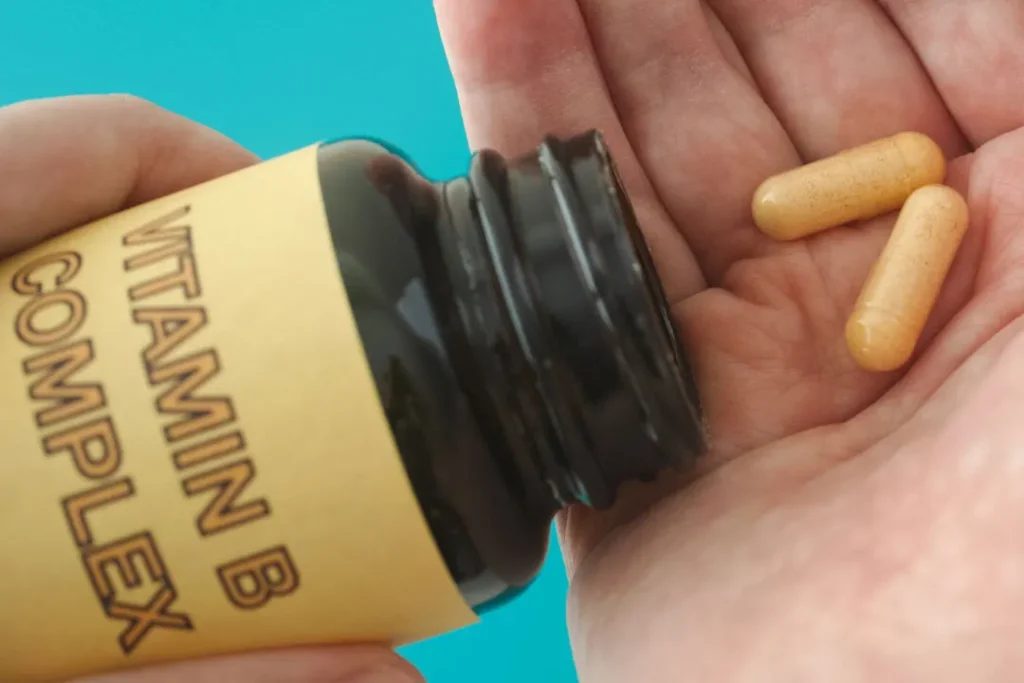Superfoods have been gaining popularity in recent years as people have become more health-conscious and aware of the importance of proper nutrition. Blue spirulina is a potent and nutritious type of algae that ranks high among superfoods and is touted for its numerous health benefits. In this article, we will explore the background and benefits of blue spirulina, how to consume it, and any potential side effects.
Blue spirulina (Arthrospira platensis) is a spiral-shaped, filamentous microbe typically found in warm, mineral-rich alkaline lakes and ponds and is one of the oldest life forms on Earth. It’s a type of algae belonging to a group of bacteria called cyanobacteria that appeared around 2.1 billion years ago. These ancient, microscopic organisms use light, warmth, water, and minerals to produce vital nutrients such as proteins, carbohydrates, and vitamins.
Today’s largest concentrations of blue spirulina are found at Lake Texcoco in Mexico, Lake Chad in Central Africa, and along the Great Rift Valley in east Africa.
Watch Video For This Article:
You May Also Like:
5 Great Reasons to Try CBD for Foot Pain
Using CBD Massage Oil for Pain Management: The Surprising Benefits
The Power of Blue Spirulina: 5 Benefits You Need to Know is an original (HealthXWire) article.
Blue spirulina – food for Aztecs and Astronauts
Ancient cultures used blue spirulina as a food source for centuries. When the Spanish conquered Mexico in the sixteenth century, they noticed that the Aztecs were collecting a strange “new food” (spirulina) from a nearby lake (Lake Texcoco).
In 1940, French botanist Pierre Dangeard published a report on the consumption of dihé – a dried bread made with blue-spirulina eaten by the people of Africa near Lake Chad. His report drew the attention of Europe and the United States to spirulina, leading to further research on the topic.
By the 1960s, blue spirulina was launched into space when NASA proposed it as a potentially healthy food for astronauts. NASA gave spirulina a big thumbs up in a published report and continues to use spirulina on space missions. Who knows, blue spirulina could potentially be one of the first foods eaten on Mars.
Today, blue spirulina is commercially cultivated in various countries, including the United States, China, and India. It’s commonly utilized as a natural food colorant, a nutritional supplement, and a potential treatment for certain medical conditions. While the FDA has not yet approved spirulina as a medical treatment, it has approved it as a food coloring.
Blue spirulina – superfood nutritional profile
Blue spirulina is one of the most nutrient-concentrated foods on the planet, with protein making up 60-70% of its dry weight. It also contains eight of the nine essential amino acids that the body can’t produce on its own and ten of the eleven non-essential amino acids.
Spirulina’s high levels of specific amino acids make it unique among plant-based proteins. It’s exceptionally high in methionine, which is vital for building muscle and repairing tissues. It’s also high in phenylalanine, which assists in synthesizing other amino acids and neurotransmitters in the brain.
In addition to its impressive protein content, blue spirulina is packed with nutrients, including:
- B-Complex vitamins
- Thiamin
- Riboflavin
- Niacin
- Copper
- Iron
- Beta-carotene
- vitamin E
- Minerals: zinc, selenium, magnesium, potassium, and manganese
Furthermore, blue spirulina also provides both omega-6 and omega-3 fatty acids in an approximately 1.5:1 ratio, making it a great source of healthy fats.

Five health benefits of blue spirulina
1. May help reduce allergies
Blue spirulina is an immune system modulator that can reduce the immune response that leads to allergic reactions. Blue spirulina can stop the release of histamines, helping alleviate symptoms associated with allergies. One study found that people with allergic rhinitis who consumed 2 grams of spirulina daily experienced a significant reduction of symptoms like nasal discharge, sneezing, congestion, and itching.
Additionally, spirulina’s anti-inflammatory and antioxidant properties can help reduce the inflammation and oxidative stress often associated with allergic reactions.
2. May improve heart health
Blue spirulina has the potential to improve your heart’s health by:
Reducing blood pressure – A human clinical trial showed “Significant decreases in SBP and DBP were observed in the spirulina group after three months of treatment….” While the exact mechanism is unknown, one line of thinking is that spirulina may increase nitric oxide production, which relaxes and dilates your blood vessels, allowing for better blood flow.
Lowering cholesterol levels – A 2014 controlled clinical trial determined that taking just one gram of spirulina per day can lower triglycerides by 16.3% and decrease LDL cholesterol by 10.1%.
3. May help to control type II diabetes
Blue spirulina may aid in controlling type II diabetes by:
Improving insulin sensitivity – Insulin is a hormone that helps regulate blood sugar levels. Insulin resistance happens when your body becomes less sensitive to it, resulting in higher blood sugar levels. This study found that two-month spirulina supplementation significantly reduced fasting blood sugar levels.
Reducing oxidative stress – blue spirulina’s high antioxidant content can help reduce oxidative stress that can lead to cell damage, a condition associated with diabetes complications.
Reducing inflammation – Spirulina’s anti-inflammatory properties can help reduce inflammation that contributes to the progression of diabetes.
4. May help maintain eye health
Spirulina can potentially prevent the development of age-related macular degeneration (AMD), cataracts, and other eye diseases.
Again, this is due to blue spirulina’s high antioxidant content, which fights against oxidative stress, a significant factor in the development of AMD. Specifically, spirulina contains several carotenoids, including beta-carotene, zeaxanthin, and lutein, which act as antioxidants and filter out blue light that can damage the retina. A Harvard University study shows that lutein and zeaxanthin, found in the retina, may decrease your risk of AMD by up to 43%.
Furthermore, spirulina has been shown to improve circulation in the body, including the eyes, which helps deliver nutrients and oxygen to them, promoting overall eye health.
5. Provide metabolism support
As mentioned, blue spirulina is a rich protein source, and protein is vital for maintaining and building muscle mass, which is necessary for a healthy metabolism. A higher muscle mass can help increase your resting metabolic rate, which means your body burns more calories even while at rest, making it easier to maintain a healthy weight.
Spirulina also contains several nutrients that can help boost energy levels, including vitamins B1, B2, and B3, iron, and magnesium. These nutrients are essential for energy production in the body and can help support a healthy metabolism.


How to include blue spirulina as part of your health protocol
Blue spirulina powder can be easily incorporated into meals and beverages. For example, it can be sprinkled on salads, added to juices, smoothies, and other beverages, or mixed into baked goods. Another great option is to consume blue spirulina in a supplement blend that contains other beneficial ingredients, as you can select a mixture based on your needs and preferences.
An example of a general health blend that includes a healthy dose (1,679 grams) of blue spirulina is Boomer Boost, a comprehensive, all-in-one nutritional supplement explicitly designed to naturally increase energy levels and support vital body functions.
Boomer Boost is made and sold by Boomers Forever Young. Co-founder and President Robert Gilpatrick is a holistic nutrition and marketing consultant with decades of experience in nutrition; he’s developed a line of products promoting health and well-being throughout the aging process. He says that Boomers Forever Young is: “More than a nutrition company; we help people with the totality of body, mind, and spirit and guide them on the path to the highest possible version of themselves.”


Blue spirulina – potential side effects and precautions
While blue spirulina is generally considered safe for consumption, there are some potential side effects and precautions to keep in mind, as you would when taking any supplement:
- Allergic reactions
- Digestive issues
- Interactions with medications
Blue spirulina has earned its high rank among superfoods.
Given the many benefits of blue spirulina, including its potential to reduce inflammation, boost your metabolism, improve your heart health, and regulate blood sugar levels, you may want to consider giving this tiny ancient superfood a place in your health regimen.


For Further Reference:
PubMed Central – Spirulina in Clinical Practice: Evidence-Based Human Applications
The European Space Agency – Full circle: space algae fighting malnutrition in Congo
BBC Travel – How Mexico is reclaiming spirulina
The Guardian – Spirulina: a luxury health food and a panacea for malnutrition
Live Science – What Are Algae?
PubMed Central – Spirulina in Clinical Practice: Evidence-Based Human Applications
Important Note: The information contained in this article is for general informational purposes only, and should not be construed as health or medical advice, nor is it intended to diagnose, prevent, treat, or cure any disease or health condition. Before embarking on any diet, fitness regimen, or program of nutritional supplementation, it is advisable to consult your healthcare professional in order to determine its safety and probable efficacy in terms of your individual state of health.
Regarding Nutritional Supplements Or Other Non-Prescription Health Products: If any nutritional supplements or other non-prescription health products are mentioned in the foregoing article, any claims or statements made about them have not been evaluated by the U.S. Food and Drug Administration, and such nutritional supplements or other health products are not intended to diagnose, treat, cure, or prevent any disease.
Table of Contents


